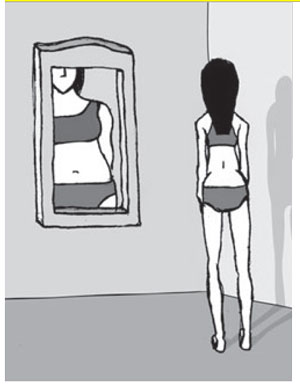Reply To:
Name - Reply Comment

 There is no doubt that all of us love to have a perfect body with the ideal height and weight. Such bodies have super perfect features and are sharp and toned as well. Of course such an asset can boost our self-confidence. Thanks to social media, we do care about the way we look more than before.
There is no doubt that all of us love to have a perfect body with the ideal height and weight. Such bodies have super perfect features and are sharp and toned as well. Of course such an asset can boost our self-confidence. Thanks to social media, we do care about the way we look more than before.
According to the latest research studies, the new generations are found to be under so much pressure they tend to carry out bizarre practices in order to achieve a dream appearance.
In this article, we are going to talk about eating disorders and their nature, so that the next time you witness someone with weird eating habits, it won’t be difficult to identify what he is suffering from in order to offer help.
Anorexia Nervosa and Bulimia Nervosa are so far the commonest, clinically recognized eating disorders identified among people. These eating disorders account for 2/3rds of the individual cases. These people are overly attentive about getting fat and make extreme restrictions on their dietary plans, in order to avoid gaining weight. Also, if there is a failure in maintaining their diet in the expected manner, due to some reason, they get very irritated, upset and reach a psychologically disturbed state.
What is Anorexia Nervosa? 
Anorexia Nervosa, is a type of eating disorder where affected individuals tend to avoid food, due to the fear of gaining weight. While there is a significant female predominance, teenagers are known to be the most vulnerable age group.
Main clinical features
Additionally, anorectic people are considered to be perfectionists and introverts most of the time. They have a history of maintaining poor relationships with others, suffer from low self-esteem, anxiety and depression. More importantly, when people around them question their weird pattern of meals and behaviour, they tend to become extremely rude, irritated and angry. Therefore, they usually become secretive about their lifestyles and prefer to be alone and isolated.
Even though the exact cause for Anorexia Nervosa hasn’t been identified yet, it’s believed to be a disorder associated with culture, occupation, family history, relationship, negative life events and stressful situations.
What is Bulimia Nervosa?
Bulimia, refers to an eating disorder which is characterized by bingeing on food (eating a large amount of food in a short period of time) which is followed by purging in order to avoid weight gain. Teenagers and women are the most affected group of people. Bulimia often starts during early twenties and lasts until adulthood as a chronic disorder.
A patient is more vulnerable to have the disease if the family members are obese or having eating disorders, a career which stresses about body size ( ballerinas, models), wanting to imitate media personals who have slim bodies, perfectionism (wanting the life to be perfect and worries about little things) or stressful life events. People with Bulimia are very conscious of their weight and body shape and they try to stick to strict diet plans to lose weight. But when they get hungry after a long period of starving they tend to binge eat. After their meals, feelings of shame, guilt, distress and worry about gaining weight will eventually make them purge.
They may also try to misuse laxatives, enemas and diuretics. The other special thing about these affected individuals is they aren’t thin but, normal in body size and they tend to binge eat and purge secretly and always deny that they do so.
Complications
The difference
Lets focus on the individual’s weight and the behaviour after having meals with regard to anorexic people. Such people are very thin or emaciated most of the time and their menstrual cycle is often disturbed by the long term inadequate food intake. On the other hand, Bulimic people usually have an average weight ideal for their height and age or are sometimes obese.
Meals of Anorexic people aren’t very heavy or followed by purging like those of Bulimic people. Instead they prefer to starve or eat less.